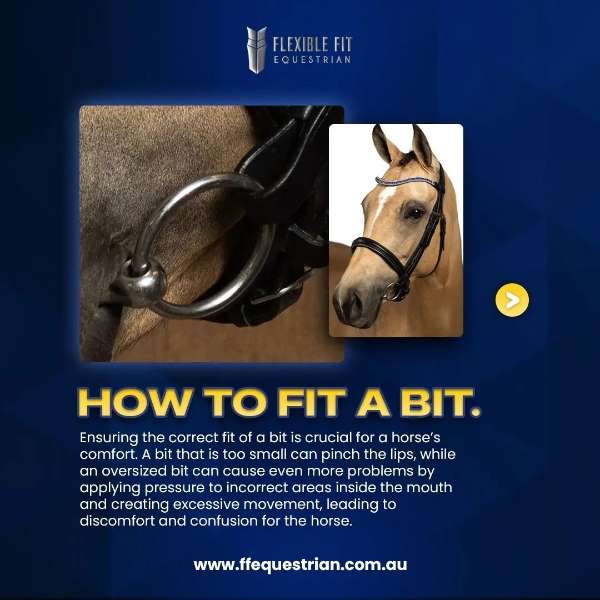A Bit About Bits
The bit is one of the most essential and commonly used pieces of tack for horses, but selecting the right one can often be confusing and controversial, especially when it comes to size and type. Given the numerous factors involved, it’s not surprising that choosing the right bit can be a challenge. Considerations include the horse’s conformation, behaviour, and specific needs, as well as your own ability—since certain bits can be harsh if not handled properly.
In this blog, we will guide you through the process of selecting the right bit by looking at your horse's characteristics, the various cheek and mouthpieces, the materials used, and the pros and cons of each type.
Click the link to jump directly to: Which Brand of Bit?
As always, we recommend consulting a trained professional or a trainer before making any changes to your tack.
Fitting a Bit to Your Horse: What You Need to Know
Choosing a Bit for Your Horse – Bit Fitting
It is crucial to ensure that the bit fits your horse correctly, as the horse’s mouth and tongue are sensitive and delicate areas. Any discomfort or pain can lead to undesirable or dangerous behaviours, as well as cause serious, long-lasting damage. The bit should facilitate communication, not serve as a form of punishment.
Incorrect fitting can cause common issues such as head shaking, refusal to perform, opening the mouth, tongue rolling, or even subtle signs like a dropped shoulder or picking up the wrong lead during canter. Whether the issue is subtle or severe, it’s important to check all areas of the horse’s body to rule out underlying problems such as back issues or lameness.
Proper bit fitting depends on your individual horse. If you're unsure, seek assistance from a professional or trainer.
Choosing a Bit for Your Horse – Mouth and Teeth
Ensure that your horse’s mouth and teeth are in good condition. If there are any sores, sharp teeth, or other issues, placing a bit in the horse’s mouth could worsen the discomfort. Regularly check the horse’s teeth with a qualified dentist and ensure there are no abrasions, bruises, or sores on the mouth, tongue, or bars, as these will make the horse reject the bit.
Choosing a Bit for Your Horse – Mouth Conformation
The horse’s mouth conformation plays a significant role in choosing the right bit. For example, breeds like natives, cobs, and warmbloods tend to have fleshy lips and large tongues, making thick bits unsuitable. In contrast, breeds like Arabs and Thoroughbreds may have small mouths and low palates, so single-jointed bits could cause discomfort by putting excessive pressure on the roof of the mouth.
When examining your horse, consider the following:
- Do they have fleshy lips?
- Does their tongue bulge against the teeth (indicating a large tongue)?
- Do the lips wrinkle easily?
- Do they have a small mouth?
- How much space is there between the tongue and the roof of the mouth? (You can determine this by gently resting your finger on the bars inside the mouth and curving it as if mimicking a bit’s mouthpiece.)
Choosing a Bit for Your Horse – Fitting a Bit
The bit should be long enough to prevent the cheekpieces from rubbing or pinching the horse’s face, but not so long that it can slide from side to side.
It’s also important that the bit rests correctly in the horse’s mouth. As a general rule, the bit should have 1 to 1.5 wrinkles at the corner of the mouth, without causing a false grin or sitting too low so that the horse can get its tongue over the bit.
To measure the size of your bit, you can tie a knot at one end of a piece of rope or bailing twine, place it in the horse’s mouth, mark the other side, and measure accordingly. Alternatively, if your current bit fits properly, you can simply measure that one.
Choosing a Bit for Your Horse
If you’d like to explore our extensive range of bits and discover other styles, feel free to click the link below and browse our selection.
Explore our Horse Bits collection on our website.



































